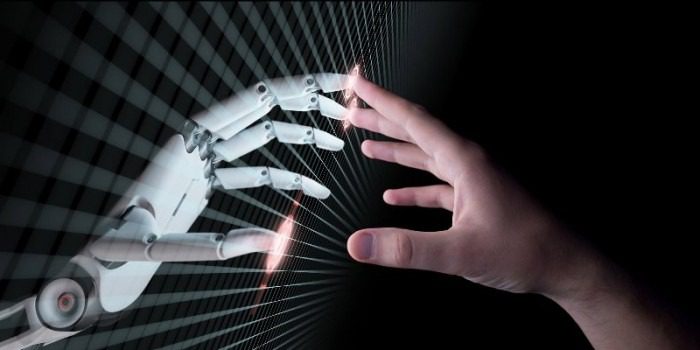This blog is provided by our partner, 123sonography.
Written by Prof. Thomas Binder, MD, FESC and Martin Altersberger, MD
Unpleasant awakening
Michael sat upright in his bed his hand clenched to his chest. The stabbing pain was definitely getting worse.
A look at his smartwatch clearly showed that indeed Michael had a medical problem. Galvanic skin response, skin temperature, lactate, and sweat electrolyte composition were all way above normal. His heart was beating and Fred was out of breath.
Do I need to see a doctor? Before Fred had a clear answer, the alarm on his watch went off. A red light was blinking and a sign went on reading “Seek medical attention NOW.”
At the doctor’s office—Introducing “SAM”
Michael always hated “talking” to SAM—a 3rd generation “MedBot.”
But, Dr. Ellison insisted that every patient has to be scanned and analyzed first by SAM before being even allowed into her office.
SAM greeted Michael friendly reaching out to shake his hand.

Michael knew that while it was a friendly gesture, at the same time beams of light were sent through his skin measuring his blood pressure, heart rate, and many other parameters. Many of which Michael had never heard.
“When did the pain start? Where exactly is the pain? Can you describe its intensity on the following scale?” While answering, SAM performed a graphene vapor analysis, to monitor specific biochemical information from his breath and skin.

“Michael, you can see Dr. Ellison now.”
Michael was guided into the office, bypassing a long line of patients. This time Michael “loved” SAM.
From head to toe
One could tell that it was important to Dr. Ellison that her office created an atmosphere of comfort and warmth. Despite the many screens, computers, scanners and medical instruments the office looked quite nostalgic with paintings of famous doctors and scientists: William Harvey, Rene Laennec and Inge Edler the inventor of echocardiography.
“Hi, Michael. I see you have severe chest pain,” Dr. Ellison lifted her eyes over the tablet and looked directly at Michael.
“Yes, Dr. Ellison, especially when I inhale.”
“SAM’s analysis shows me you haven’t been taking your medications lately, but let me run a few more tests on you. In a few minutes we know what your problem is.”
Several mechanical arms extend down from the ceiling and a wireless 12-lead ECG is performed. Just a small pinch into the finger from one of the robotic arms and hundreds of lab values are displayed on the screen right in front of Dr. Ellison.

At the same time, a high-resolution infrared camera takes thermographic images of his chest to rule out any injuries or orthopedic problems that might explain Michaels’s symptoms.
Dr. Ellison places here stethoscope on his chest.
“Michael, please inhale and exhale slowly.”
Michael has the impression that Dr. Ellison is concentrating more on what appears on the screen than what she is hearing with the stethoscope.
He reads: All data collected. Send to WATSON?
Dr. Ellison presses the enter button…
Is this the future of medicine?
Does this sound like science fiction? And which of the described diagnostic tools will most likely NOT be used in the future?
Stay tuned for the second act on the death of the stethoscope…
Looking for additional inspiration? Sign up for our POCUS Post™ newsletter to receive monthly tips and ideas.





















